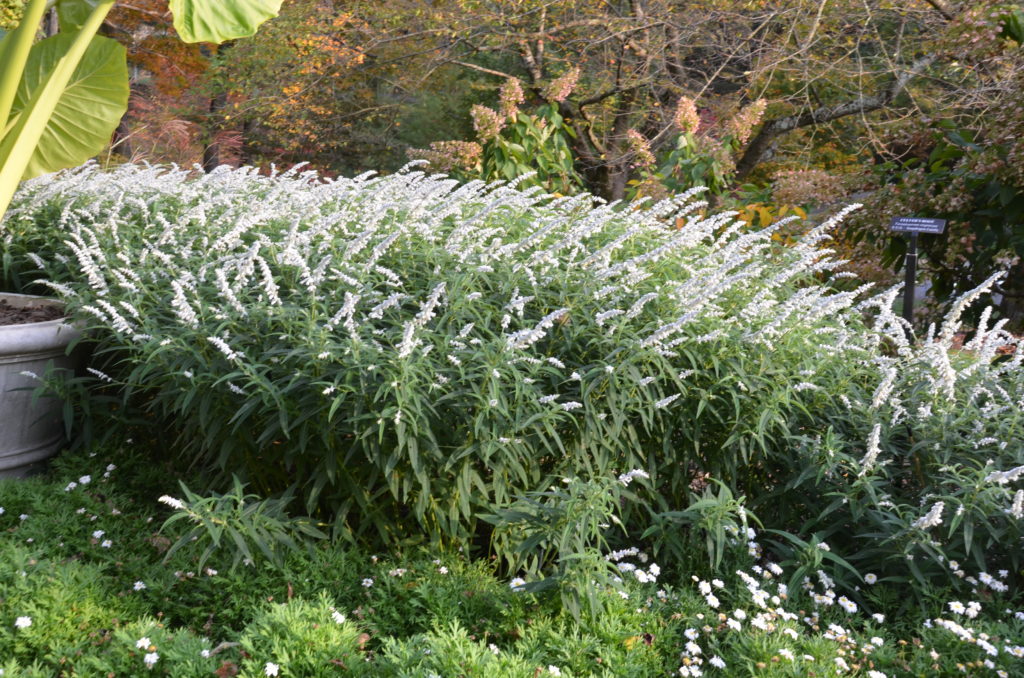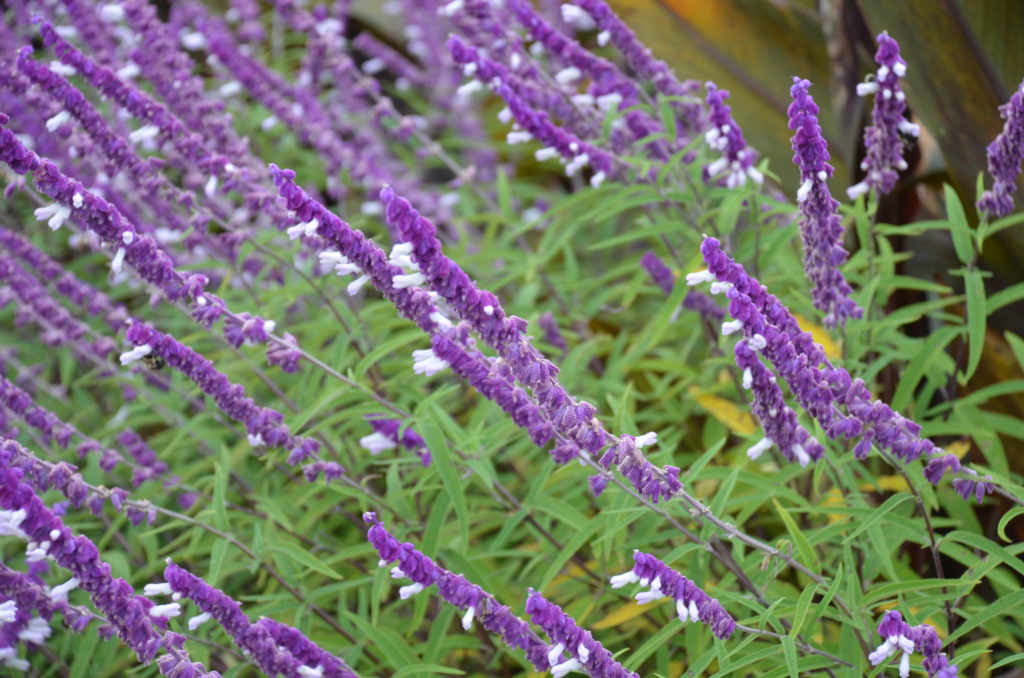
Mexican bush sage (Salvia leucantha), aka velvet sage, is a perennial that lights up the late summer / fall garden (USDA hardiness zone 7b-10). Indigenous to Central America and Mexico, it can be grown as an annual that grows to about 3-4 feet tall. In the U.S., bush sage is only hardy from the lower Piedmont to the coastal plain, and extreme winters may kill it.
Bush sage is prized for its dense, arching spikes of showy flowers. Choice of flower colors include purple, blue, and white. Bloom stalks bear persistent flower bases which are velvety and purplish. Bicolor flowers (white corollas and purple calyces) are stunningly spectacular. The individual flowers maybe short-lived and very abundant.

Plants prefer full sun (6 or more hours of direct sunlight daily) and humus-rich well-drained soil. Plants are moderately drought tolerant. Bush sage should be kept adequately water during hot dry intervals of summer; irrigate weekly the first growing season if rainfall is less than 1 inch.
Bush sage may freeze and experience crown death in wet soggy winter soils. Wait to cut back dead stems from late February thru early April as new growth emerges. Plants may be trimmed back 2 or 3 times during the spring and summer months to promote dense, more compact plant with heavier late seasonal bloom.
Bush sage may be propagated by seed or overwintering cuttings collected in late summer. Purchase potted plants at garden centers in spring or start seedings indoors 6-8 weeks prior to the last spring frost date in your area.
In Tennessee, North Carolina, and Virginia when winters are exceptionally mild, plants may survive in protected locations covered with leaf mulch. When winter temps are severe, expect plants to die.
Flowers are attractive to hummingbirds and butterflies and ignored by deer and rabbits.
Mexican Bush Sage

 Posted in
Posted in 
